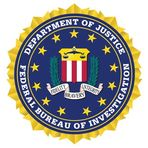The Echoes of Violence: A Nation at a Crossroads
June 18, 2025, 10:37 pm
The United States stands at a precarious juncture. Political violence, once a shadowy specter, now looms large. Recent events in Minnesota have thrust this issue into the spotlight. The tragic shooting of Democratic lawmakers has ignited a firestorm of debate. The nation grapples with the implications of this violence. It’s a grim reminder of a history steeped in bloodshed and division.
In the wake of the Minnesota shootings, President Trump’s response was telling. He dismissed the idea of reaching out to Governor Tim Walz, branding him as “whacked out.” This dismissal speaks volumes. It reflects a broader trend in American politics. Leaders are increasingly reluctant to bridge divides. Instead, they deepen them. The tragedy in Minnesota is not just about the victims. It’s about a nation struggling to heal.
The Anti-Defamation League’s findings are stark. From 2022 to 2024, all political killings were attributed to right-wing extremists. This trend shifted dramatically on January 1, 2025, when a man affiliated with the Islamic State killed 14 people in New Orleans. The landscape of political violence is shifting. It’s becoming more chaotic, more unpredictable. Jacob Ware, a terrorism expert, notes this randomness. It’s a reflection of a society on edge.
The roots of political violence in America run deep. From the assassination of Abraham Lincoln to the civil rights movement, history is littered with blood. The 1960s and 1970s were particularly tumultuous. Icons like Martin Luther King Jr. and Robert F. Kennedy fell victim to violence. Today, we see echoes of that era. The current climate is reminiscent of those dark days. The violence is not just physical; it’s ideological.
Trump’s administration has played a significant role in this narrative. Early in his presidency, he pardoned those involved in the January 6 Capitol riot. This act sent a clear message: violence is permissible for his supporters. It emboldened extremists on both sides. The rhetoric has become increasingly incendiary. Political leaders now often resort to dehumanizing language. This creates an environment ripe for violence.
The Minnesota shooter, Vance Boelter, is a case in point. His background is murky, but his actions are clear. He targeted Democratic officials, leaving a trail of chaos in his wake. The aftermath of his attack has sparked a blame game. Conservatives quickly labeled him a liberal, despite evidence to the contrary. This knee-jerk reaction illustrates a dangerous trend. Each act of violence becomes fodder for political point-scoring.
The media plays a crucial role in this dynamic. Coverage often sensationalizes violence, framing it within partisan narratives. This can normalize aggression. Nancy Pelosi’s recent statement highlights this concern. She warned that reactions to violence can perpetuate a cycle of hostility. The media must tread carefully. It has the power to shape public perception. It can either incite fear or promote understanding.
Trump’s rhetoric has also evolved. While he condemned the Minnesota shootings, his history of bellicose language cannot be ignored. He has consistently labeled opponents as “sick” and “evil.” This kind of talk fuels the fire. It legitimizes violence in the eyes of some supporters. The president’s actions have consequences. They create an atmosphere where political violence is not just possible, but likely.
The implications of this violence extend beyond individual acts. It threatens the very fabric of democracy. When political discourse devolves into violence, trust erodes. Citizens become fearful. They retreat into echo chambers, further entrenching divisions. This is a dangerous cycle. It can lead to a breakdown of civil society.
As the nation grapples with these issues, the path forward remains unclear. Leaders must rise to the occasion. They must prioritize healing over division. This requires courage and humility. It demands a commitment to dialogue. Political leaders must be willing to engage with those they disagree with. They must model the behavior they wish to see in their constituents.
The tragedy in Minnesota is a wake-up call. It’s a reminder that political violence is not an abstract concept. It has real consequences. Families are shattered. Communities are torn apart. The nation must confront this reality head-on. It must reject the normalization of violence. It must strive for a future where dialogue triumphs over discord.
In conclusion, the United States stands at a crossroads. The echoes of violence reverberate through its history. Today, those echoes are louder than ever. The nation must choose its path wisely. It can either continue down the road of division and hostility or forge a new path of understanding and unity. The choice is clear, but the journey will be fraught with challenges. It requires a collective effort. It demands a commitment to a better future. Only then can the nation hope to heal.
In the wake of the Minnesota shootings, President Trump’s response was telling. He dismissed the idea of reaching out to Governor Tim Walz, branding him as “whacked out.” This dismissal speaks volumes. It reflects a broader trend in American politics. Leaders are increasingly reluctant to bridge divides. Instead, they deepen them. The tragedy in Minnesota is not just about the victims. It’s about a nation struggling to heal.
The Anti-Defamation League’s findings are stark. From 2022 to 2024, all political killings were attributed to right-wing extremists. This trend shifted dramatically on January 1, 2025, when a man affiliated with the Islamic State killed 14 people in New Orleans. The landscape of political violence is shifting. It’s becoming more chaotic, more unpredictable. Jacob Ware, a terrorism expert, notes this randomness. It’s a reflection of a society on edge.
The roots of political violence in America run deep. From the assassination of Abraham Lincoln to the civil rights movement, history is littered with blood. The 1960s and 1970s were particularly tumultuous. Icons like Martin Luther King Jr. and Robert F. Kennedy fell victim to violence. Today, we see echoes of that era. The current climate is reminiscent of those dark days. The violence is not just physical; it’s ideological.
Trump’s administration has played a significant role in this narrative. Early in his presidency, he pardoned those involved in the January 6 Capitol riot. This act sent a clear message: violence is permissible for his supporters. It emboldened extremists on both sides. The rhetoric has become increasingly incendiary. Political leaders now often resort to dehumanizing language. This creates an environment ripe for violence.
The Minnesota shooter, Vance Boelter, is a case in point. His background is murky, but his actions are clear. He targeted Democratic officials, leaving a trail of chaos in his wake. The aftermath of his attack has sparked a blame game. Conservatives quickly labeled him a liberal, despite evidence to the contrary. This knee-jerk reaction illustrates a dangerous trend. Each act of violence becomes fodder for political point-scoring.
The media plays a crucial role in this dynamic. Coverage often sensationalizes violence, framing it within partisan narratives. This can normalize aggression. Nancy Pelosi’s recent statement highlights this concern. She warned that reactions to violence can perpetuate a cycle of hostility. The media must tread carefully. It has the power to shape public perception. It can either incite fear or promote understanding.
Trump’s rhetoric has also evolved. While he condemned the Minnesota shootings, his history of bellicose language cannot be ignored. He has consistently labeled opponents as “sick” and “evil.” This kind of talk fuels the fire. It legitimizes violence in the eyes of some supporters. The president’s actions have consequences. They create an atmosphere where political violence is not just possible, but likely.
The implications of this violence extend beyond individual acts. It threatens the very fabric of democracy. When political discourse devolves into violence, trust erodes. Citizens become fearful. They retreat into echo chambers, further entrenching divisions. This is a dangerous cycle. It can lead to a breakdown of civil society.
As the nation grapples with these issues, the path forward remains unclear. Leaders must rise to the occasion. They must prioritize healing over division. This requires courage and humility. It demands a commitment to dialogue. Political leaders must be willing to engage with those they disagree with. They must model the behavior they wish to see in their constituents.
The tragedy in Minnesota is a wake-up call. It’s a reminder that political violence is not an abstract concept. It has real consequences. Families are shattered. Communities are torn apart. The nation must confront this reality head-on. It must reject the normalization of violence. It must strive for a future where dialogue triumphs over discord.
In conclusion, the United States stands at a crossroads. The echoes of violence reverberate through its history. Today, those echoes are louder than ever. The nation must choose its path wisely. It can either continue down the road of division and hostility or forge a new path of understanding and unity. The choice is clear, but the journey will be fraught with challenges. It requires a collective effort. It demands a commitment to a better future. Only then can the nation hope to heal.

